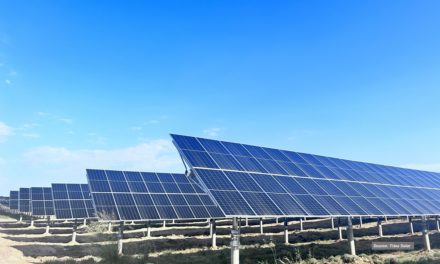- Elevating solar modules above the ground surface improves bifacial gain by reducing self-shading-induced losses
- Increasing the pitch between module rows reduces mutual shading, enhancing energy yield
- Research suggests that elevating modules to certain heights and optimizing pitch can significantly boost energy generation while maintaining economic feasibility.
The bifacial gain of a PV system depends strongly on the system’s geometry, such as the height, distance of modules, tilt angle of the panels, and orientation.
The solar module height in a solar system is defined as the distance between the ground surface and the lowest edge of the module. In the case of bifacial solar panels, the height has an impact on the energy yield. Generally, for high albedo surfaces, the higher the distance between the array and the ground, the better the bifacial gain. When bifacial modules are installed too close to the ground, the ground-reflected irradiance is limited due to self-shading. On the other hand, an increase in the height of the mounting system increases the amount of steel, thus increasing the costs. Increasing the height also increases the wind load, which again needs more steel to make the system robust. In the interest of profitability, a PV system needs to strike the right balance between yield and cost. As a rule of thumb, the module height should be at least 0.5 m above the ground. A higher elevation of 1 m above the ground can improve the bifacial gain to 30% by recovering self-shading induced losses, as indicated in a research paper from Purdue University, USA (See Complexities Of Bifacial PV Systems).
Pitch is defined as the distance between the frontside of a solar panel to the ‘frontside’ of the panel behind. A higher pitch reduces mutual shadings, hence increasing the energy yield. The design of bifacial PV systems requires not only a tolerable amount of module frontside shading from modules of the neighboring rows, it should also take the ground albedo into account, as a low pitch means higher shading, thus lowering the albedo. Thus, the optimum distance between module rows is very crucial for higher yields of bifacial PV systems. The ground coverage ratio (GCR) due to shadowing correlates directly with the pitch. The higher the pitch, the more irradiance hits the ground between the rows, which results in a higher bifacial gain, as elaborated by a technical paper from SRM Institute of Science and Technology, India published on ELSEVIER.
The text is an excerpt from the TaiyangNews Bifacial Solar Systems 2024 Report, which can be downloaded for free here.
















